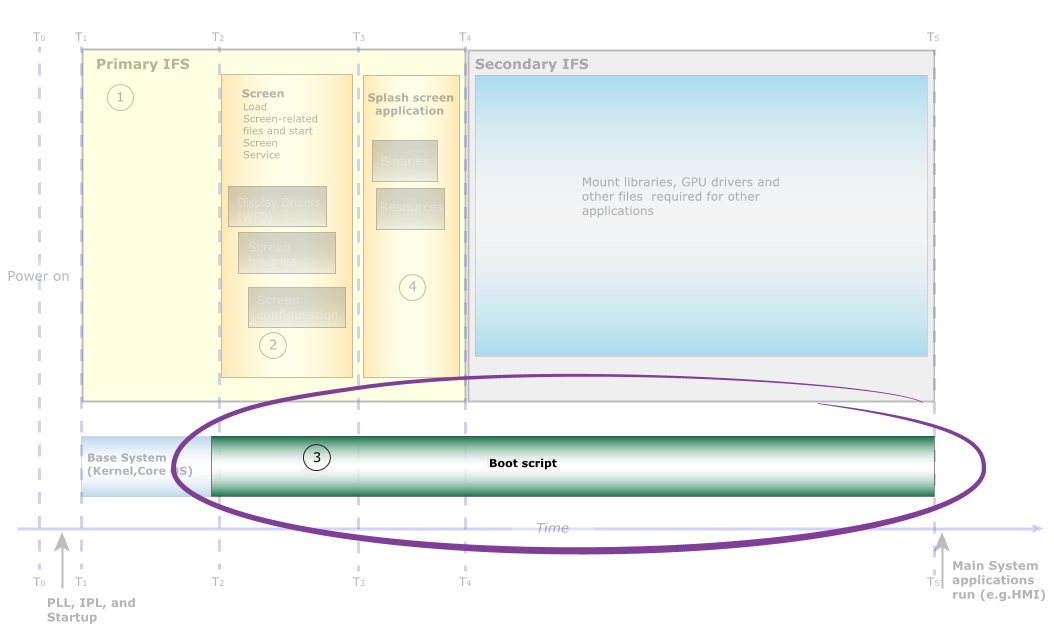With the QNX Neutrino RTOS and its microkernel architecture, you can modify the script section in the buildfile to start services or applications earlier to take advantage of any idle time on the CPU.
This flexibility lets you start certain components in your system earlier. The script section is used to generate the boot script for a system.

Figure 1. Optimize the script section in the buildfile.
-
The Screen service (screen)
Note: Don't use the an "&" (ampersand) to start screen in the background because the Screen service automatically puts itself into background when it starts. If you specify the "&", a waitfor may be executed, which may increase the time it takes to show content on the display. For more information, see Consider the placement of waitfor statements.
- Your Screen application(s) (e.g. the splash screen application)
Other boot script considerations
In some situations, you might want to start some services, such as slogger2 early so that you can debug your system. This practice is useful in the early stages of the development process, but later you might choose to disable slogger2 after your system is ready for production. You might find it useful to keep services, such as slogger2, enabled because it can help customer support troubleshoot issues in production.
For applications that use hardware rendering (OpenGL ES, OpenVG, blitting, etc.), you can choose to start the hardware-rendering application at the same time as the splash screen application. Running the applications in parallel won’t increase the time it takes to show content on the display, despite the fact that the hardware rendering application may cause device drivers to start, unless there’s CPU or disk contention.
- if the content has been shown, animation (such as a video feed) you might experience momentary pausing or stutter
- if the content hasn't been shown, the time to show the content may increase